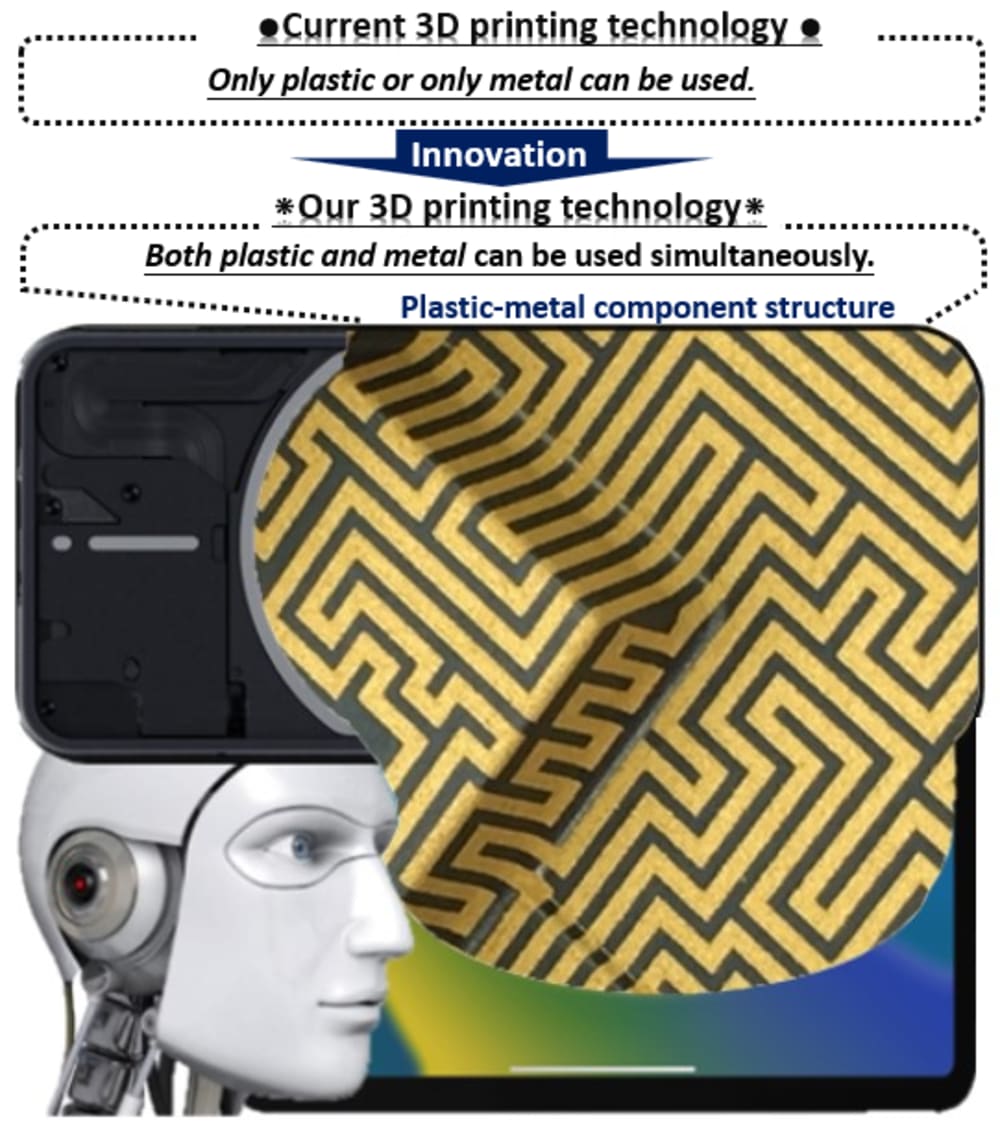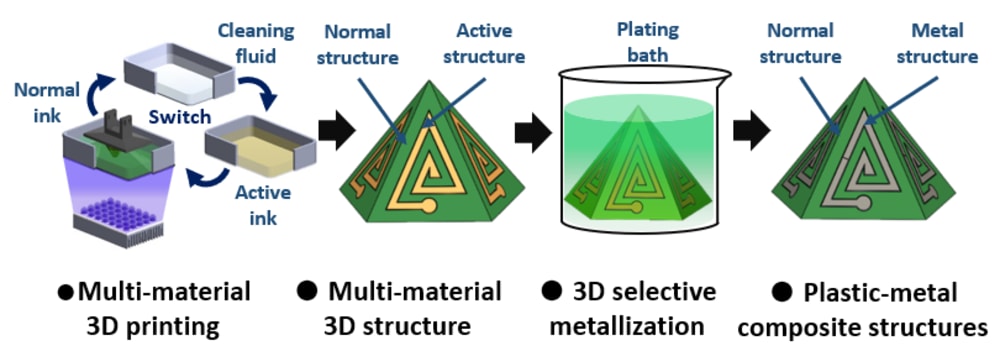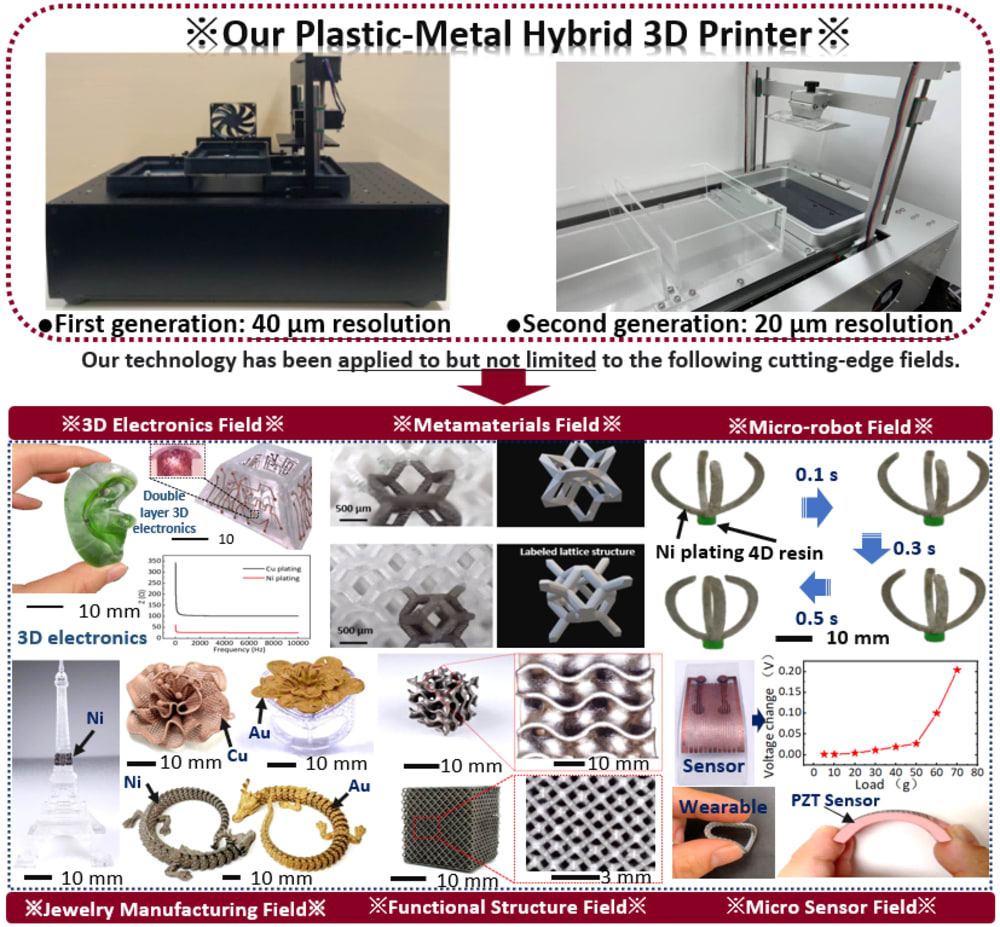

Existing three-dimensional (3D) printing technologies, whether polymer-based or metal-based, can only produce only-plastic structures or only-metal structures, which severely limits the application of additive manufacturing technologies (AM) in electronics such as IOT, ICT, and robotics. Electronic devices typically consist of both functional plastics and metals, including sensors and microactuators. They are connected together to manipulate the flow of electric current for the purpose of controlling information processing. With the proposed New Plastic-metal Composite 3D Printing Technology, these limitations can be historically broken. Our 3D printing technology enables the fabrication of both plastic and metal, allowing the metal topology designed on any complex functional plastic structure or even internal components. This can be in the form of 3D metal wires, metal patterns, topologies, or even large-scale structures with surface microstructures. Our technology is of potential importance both for academic research and industry. This is because it makes possible the integrated manufacturing of 3D electronic devices, which will make them smaller, lighter, and smarter with improved functionality and performance. This opens up a new world for the application of 3D printing technology in electronic technology.
Our manufacturing strategy is realized by a newly developed multi-material digital light processing (DLP) 3D printer and an electroless plating process. In the former, multi-material composite manufacturing of normal and active photosensitive inks is possible, while in the electroless plating process, the topology of active inks can intern the selective deposition of metals. Our strategy aims to construct a plastic-metal heterogeneous multi-material interface and build it as a whole on or even inside any 3D functional substrate with an arbitrary shape. The interface consists of our newly prepared active ink and the metal layer deposited after electroless plating, while the intermediate layer formed in the process is the nanotechnological basis for fusing the two into a single whole. The substitution of metal-based electrons at the heterogeneous multi-material interface allows the metal to function as an electron cycle during the information exchange process and the functional properties of the active ink itself.
Relying on this strategy, we have developed two generations of multi-material DLP 3D printers that enable the fabrication of plastic-metal composite structures with a minimum 20 μm-40 μm resolution. Notably, this technology offers a fundamental process and thus enables the direct construction of different functional 3D electronics. By giving different functions to plastics and combining them with different kinds of metals (including but not limited to Ni, Cu, and Au.), we can directly fabricate lattice electrode structures, complex and precise jewelry, sensors, robots, and even metamaterial electronic devices for many applications. Thus, the proposed technology has great potential for both academic research and industrial applications. It promises to change the manufacturing model of social production.
Video
-
Awards
-
 2023 Manufacturing & Materials Honorable Mention
2023 Manufacturing & Materials Honorable Mention -
 2023 Top 100 Entries
2023 Top 100 Entries
Like this entry?
-
About the Entrant
- Name:Kewei Song
- Type of entry:teamTeam members:
- Shinjiro Umezu
- Hirotaka Sato
- Marc Josep Montagut Marques
- Software used for this entry:Solidworks








